
Every aspect of traveling in Oman is infused with the country's rich cultural heritage and the natural wonders of the landscape Culture And Landscapes Of Oman

Everywhere you go, you can find evidence of the country's stories, from the moody alleyways of Mutrah Souq in Muscat, where elaborate khanjars (traditional daggers) and patterned kumma (a headpiece worn by Omani men) display superb craftsmanship and pride, to the cliffside settlements of Jebel Akhdar, where elderly men in sandals deftly negotiate winding farm trails and distill rose water in silver bowls. Every interaction in Oman stirs up a potent sense of place.
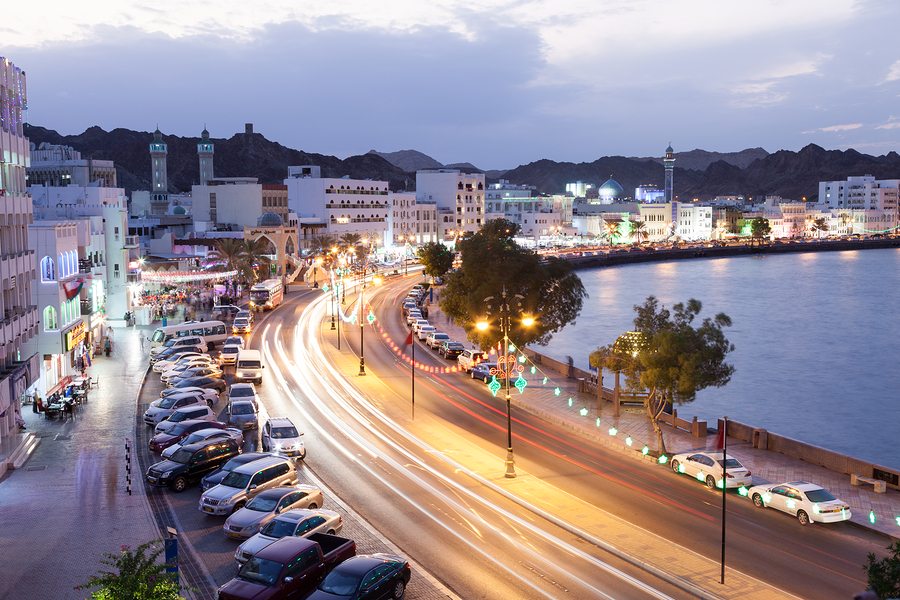
Few tourists are aware that the Sultanate of Oman has a 10,000-year history. Ancient settlements engaged in the frankincense trade are indicated by archaeological discoveries and Neolithic artifacts. From the Persian (modern-day Iran) coasts to East Africa, Omani control over sea lanes and ports during the 17th century. The nation is now renowned for its adoration of its natural landscapes and for striking the ideal balance between tradition and modernity.
Here are the best places to visit in Oman.
Muscat: an effortlessly charming capital city
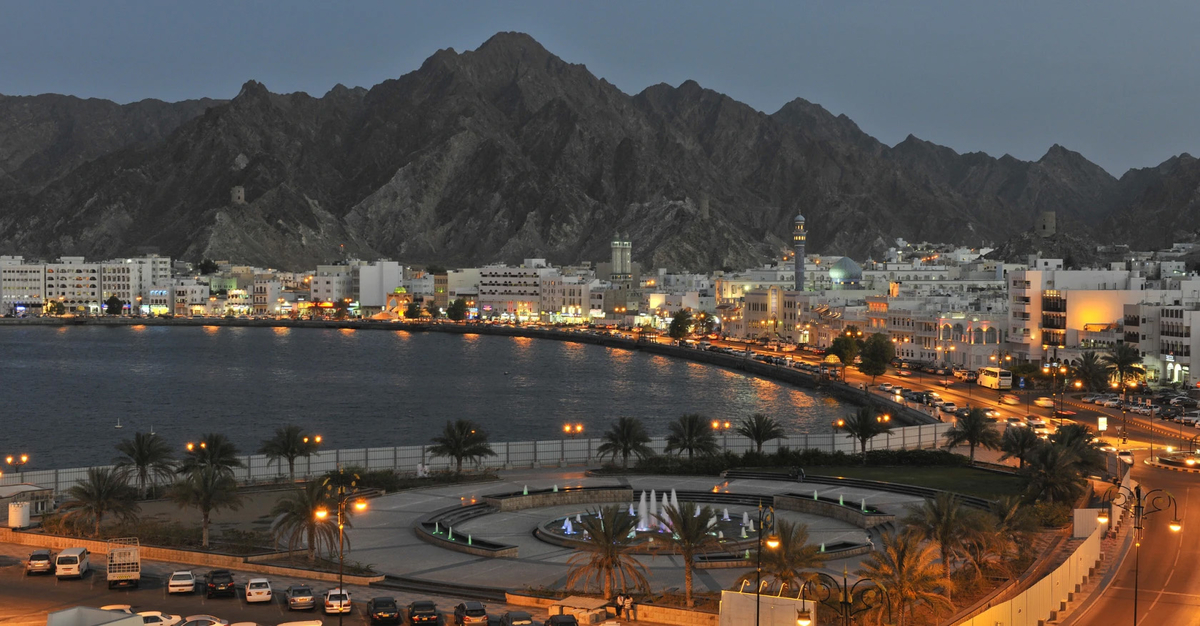
In Muscat, low-rise structures and modern architectural marvels coexist with stone forts with watchtowers, mansions with latticed balconies, and everything blends seamlessly. There is a lot to see in the capital of Oman, including upscale malls, courtyard restaurants, and charming museums in old houses that have been restored. The Sultan Qaboos Grand Mosque is a striking example of contemporary Islamic architecture, featuring arched walkways, vibrant mosaic tiles, an elaborate dome, and a chandelier adorned with Swarovski crystals.
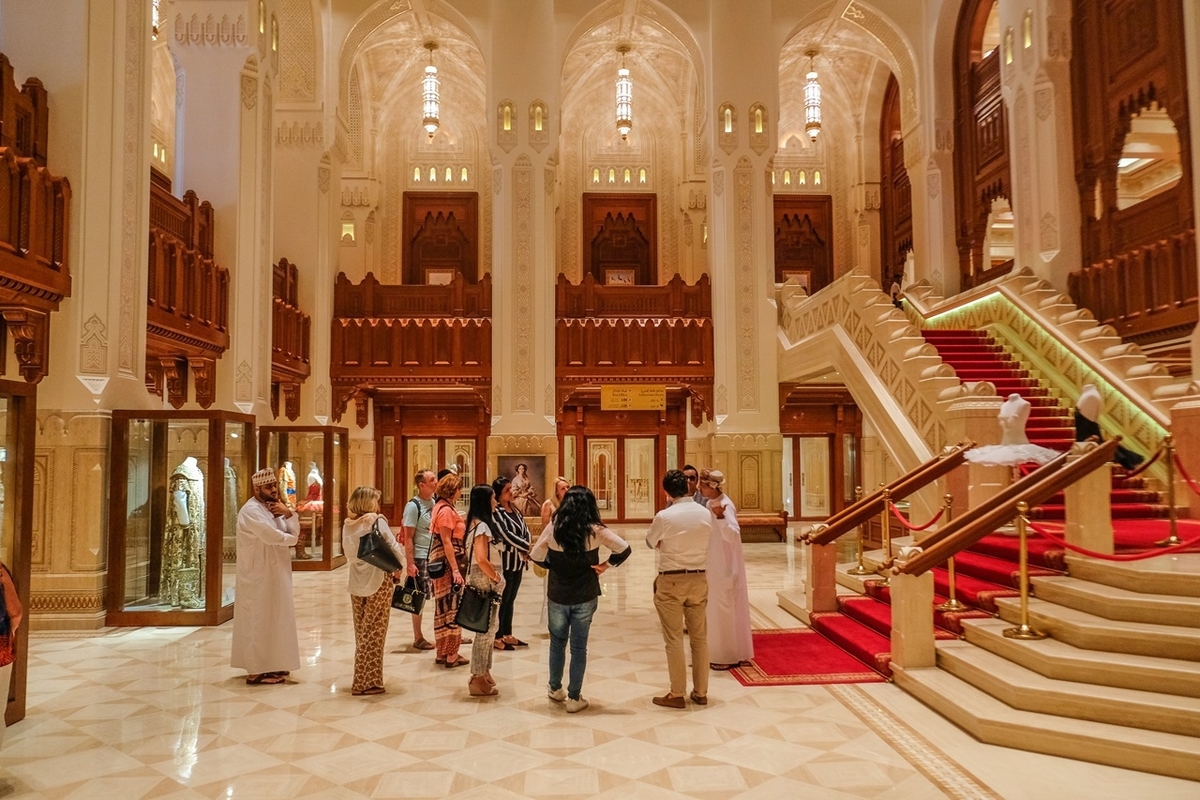
Take a guided tour of the Royal Opera House to learn more about the modern construction that was influenced by ancient fortifications. For showtimes, consult the calendar; the location features renowned productions from all over the world. The Royal Opera House has a dress code that prohibits wearing jeans, T-shirts, or tennis shoes for women and requires men to wear suits or dinner jackets for women. Admire the blue-domed mosques and whitewashed homes along Mutrah Corniche's 3 km (1.9 mi) seafront walkway. Walk over to Mutrah Fish Market to get a better look at the slatted canopy roof that is reminiscent of calligraphy and then enter to see the day's catch. You can find shops selling frankincense, lamps, regional clothing, pashminas, oud (a perfume made from agarwood), and handcrafted sandals at Mutrah Souq, one of the oldest markets in the Arab world.

Bahla: home to a legendary fort
Bahla Fort, a Unesco World Heritage Site, is located in the fortified oasis town of Bahla, where local legends and myths abound. You can find wind towers, mosques, houses, and wells inside the complex of labyrinthine forts that the Banu Nebhan tribe constructed between the 12th and 15th centuries and later expanded. According to legend, when the tribe was in danger of being attacked, they asked the jinn, strong spirits from pre-Islamic Arabian mythology, to construct the fort in a single night. The fort offers stunning views of the village's old mud homes and ruins, which are encircled by date plantations.

Mud kiln-made pottery is another specialty of Bahla, and it is thought that the local potters are endowed with particularly talented hands. At the Bahla Old Souq, you can look through pottery, jewelry, handicrafts, rugs, and other goods. You might also be able to watch potters in action at a nearby workshop. Explore Camping Tour of Oman
The nearby 17th-century Jabreen Castle, which has numerous rooms and reception areas, intricately latticed windows, painted ceilings, and a date storeroom, is worth a visit.
With our weekly newsletter, you can receive more travel ideas, advice, and special deals delivered right to your inbox.
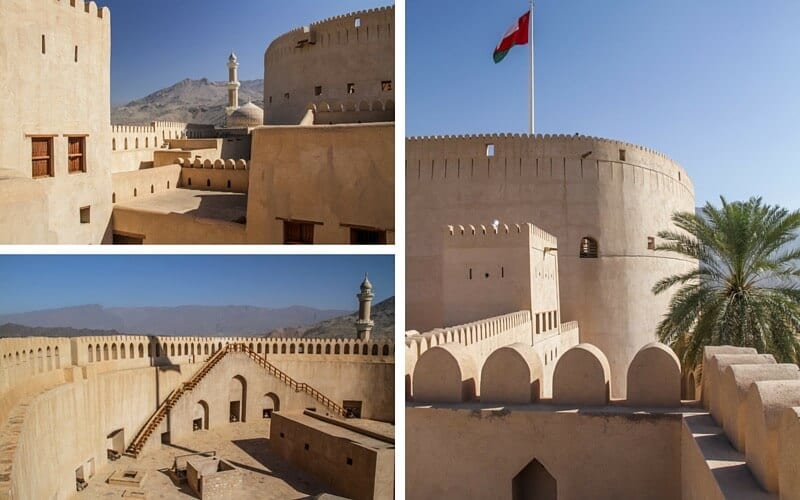
Nizwa is a place with a significant religious and cultural history.
Visit the town of Nizwa, which served as Oman's capital between the sixth and seventh centuries. There, mosques rise above sand-colored structures, their domes and minarets framed by the Hajar Mountains. Nizwa has always felt a strong connection to its religious and cultural heritage because of its location in the interior (as opposed to Muscat's location on the coast), which limited outside influences.
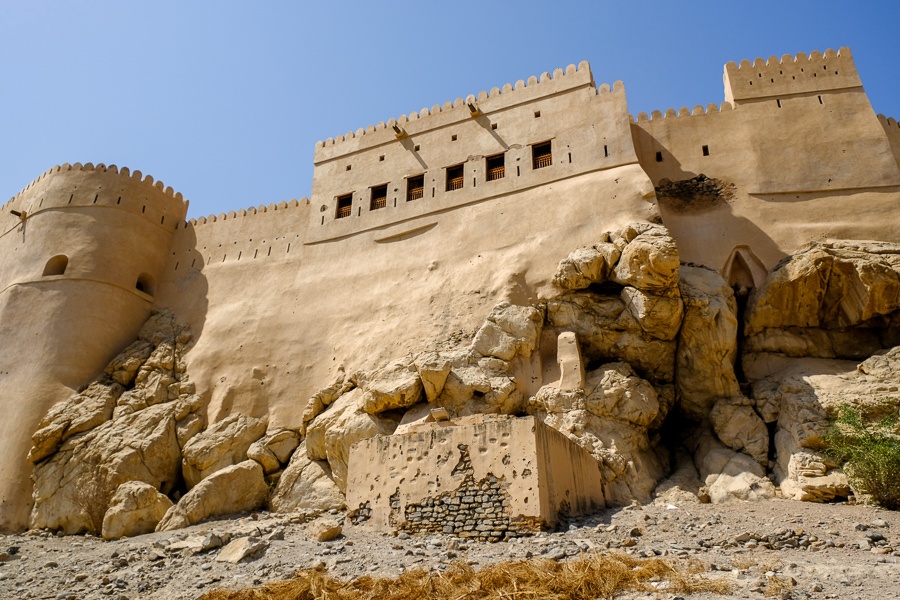
The 17th-century Nizwa Fort, with its round watchtower and high walls, protected the town from invaders over the Sultanate’s history and is a major tourist sight. At the nearby Nizwa Souq, shop for silver jewelry, delal (traditional coffee pots), saffron, dates, and spices.
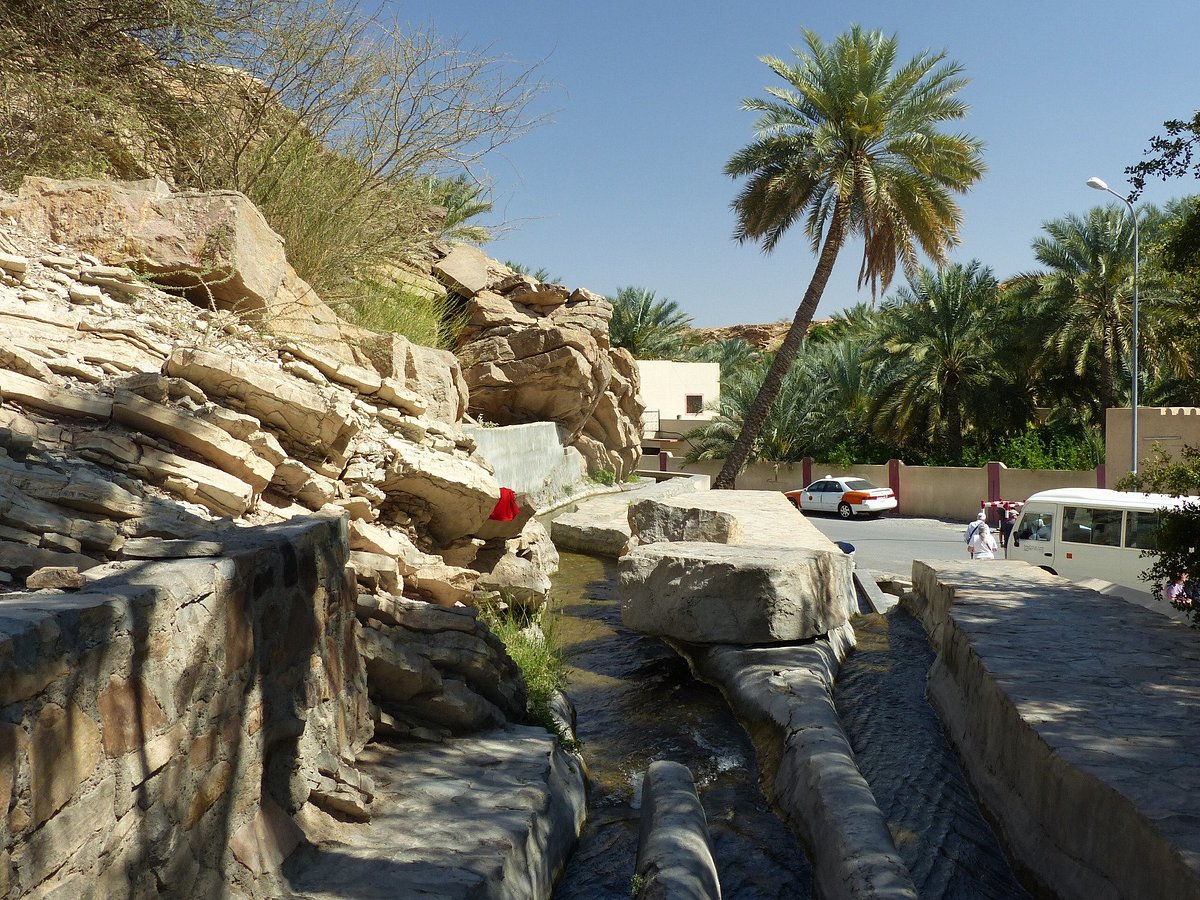
A 10-minute drive away, Falaj Daris Park, a Unesco World Heritage Site, is a great spot to see a falaj channel, an ancient but highly efficient irrigation method. This one, among nearly a hundred others, waters Nizwa’s 8km (5-mile-long) palm oasis and surrounding agricultural farms.

Musandam Peninsula: where mountain peaks rise from the sea
The Musandam Peninsula is known for its breathtaking landscape, which features the Hajar Mountains' jagged peaks rising from the turquoise sea and leaving narrow inlets of water in between—a scene that has been compared to Norway's fjords.
The best way to explore the Musandam Peninsula, visit islands, and see dolphins or whales in these waters is by boat, specifically on a traditional dhow (wooden boat). From the town of Khasab, you can plan boat tours, snorkeling excursions, and 4WD mountain safaris to Jebel Harim. Other towns, wadis, and fjord-like inlets, like Khor Najd, are available for exploration if you have more time.

Jebel Akhdar: find cooler temperatures at Green Mountain
One of Oman's most stunning locations is Jebel Akhdar, also known as the "Green Mountain," which is located in the Hajar Mountains at a height of 2980 meters (9777 feet). It's also one of the coldest, with year-round temperatures that are about 15°C (59°F) lower than Muscat. The mountain even sees some snowfall in winter.

You can find peaceful Omani villages near Jebel Akhdar, some of which are deserted, terraced farms irrigated by falaj channels, and orchards of pomegranates, peaches, apples, apricots, and walnuts. Pink Damask roses cover the Jebel Akhdar mountain range in the spring. The distilled rose water is used as a fragrance and in cooking.

There are a few clearly marked trails for walkers to choose from, some of which require descending steep steps. There are also guided hikes available. Enjoy breath-taking views of the villages and terraced farms from the Saiq Plateau. During a guided hike with Alila Jabal Akhdar, you can also travel across the mountain face using a via ferrata (mountain route).

Jebel Shams: remarkable views in the Hajar Mountains
Visit Jebel Shams, the nation's tallest peak in the Hajar Mountains at 3009 meters (9872 feet), for a picnic on the plateau with breathtaking canyon views. Through the canyons of Wadi Ghul and Wadi Nakhr, which are encircled by rocky limestone walls, hikers can embark on an adventure. The Balcony Walk is a five-hour hike that begins in the deserted village of As Sab and follows an old donkey trail that is now marked and offers breathtaking views along the rim. Other trails lead to villages, farms, date plantations, and secluded natural pools amidst the rocky terrain. One- or two-day guided hikes to the summit of Jebel Shams are available from local tour companies like Husaak Adventures.

Sharqiya Sands: visit the undulating dunes of the desert
A visit to the desert is a must on any trip to Oman. At Sharqiya Sands, also known as Wahiba Sands locally, you are surrounded by undulating dunes and desert vegetation in a scene that seems endless and, when the sun is low in the sky, appears to have been handcrafted from gold. The famous Empty Quarter, one of the largest sand deserts in the world, is reached by these wind-sculpted dunes, some of which reach heights of 100 meters (328 feet).

The Wahiba Sands are popular with local families and tourists who come for a day trip or an overnight stay in one of the many camps offering varying levels of luxury and amenities, such as Thousand Nights Camp and Magic Camps, even though Bedouin (known in Arabic as Bedu, meaning desert dweller) still live and work here (many as guides). When you stay over night, you can take advantage of the desert's peace and quiet after day visitors have left, participate in Bedouin customs around a bonfire, eat traditional food, and stargaze in one of the area's most pristine landscapes.
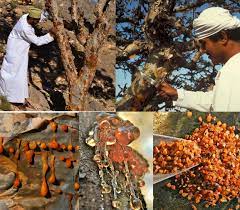
Dhofar: a region rich in frankincense
The khareef, an Indian Ocean monsoon, brings a certain romance to Salalah's lush landscapes from late June to early September. When temperatures elsewhere in the nation can soar to over 40°C (104°F) on the hottest days in the summer, it is one of the best places to visit in Oman because of the pleasant climate. An excellent starting point for exploring the larger Dhofar region is this coastal city.

There are lots of places to see in Salalah. The Sultan Qaboos Mosque, the largest mosque in Dhofar, is the best example of Islamic architecture and is accessible to non-Muslims from 8 a.m. to 11 a.m. on Saturday through Thursday. It has two domes and twin minarets. Follow the aromas of spices and frankincense into Al Hosn Souq after the obligatory photo stop in front of Al Hosn Palace, the Sultan's palace complex.

As you watch seawater geysers erupt from the ground at the Mughsail Blowholes, join local families who are picnicking on the white-sand Al Mughsail Beach. There are wadis (valleys) and natural springs in the neighborhood. A boat ride on Darbat Lake or a walk through the monsoon-fed waterfalls and past grazing cattle are both excellent ways to see Wadi Darbat's rain-soaked valley.

The rich history of frankincense, an aromatic resin obtained from the Boswellia sacra tree and used for thousands of years in the production of perfume, medicine, and religious rituals, is woven into the tale of Dhofar. From China to the Mediterranean and North Africa, frankincense was highly sought after. Dhofar was the epicenter of frankincense production.

Visit the Wadi Dawkah nature reserve to find out more. There, you'll find hundreds of frankincense trees still used for harvesting resin. The ruins of fortified medieval towns at the archeological sites of Khor Rori, Al Baleed, and Ubar provide evidence of frankincense-trading caravans and settlements. These locations, some of which date back to the fourth century BCE, make up the Land of Frankincense Unesco World Heritage Site.
In addition to housing a protected reserve with native wildlife like Arabian leopards and Arabian gazelles, the mountains of Jebel Samhan also boast breathtaking views.
Book an Exciting and Entertaining Oman tour packages with Your Friends and Family. Mountain Valley Holidays Offers Amazing Travel Tour Services at Affordable Prices.
